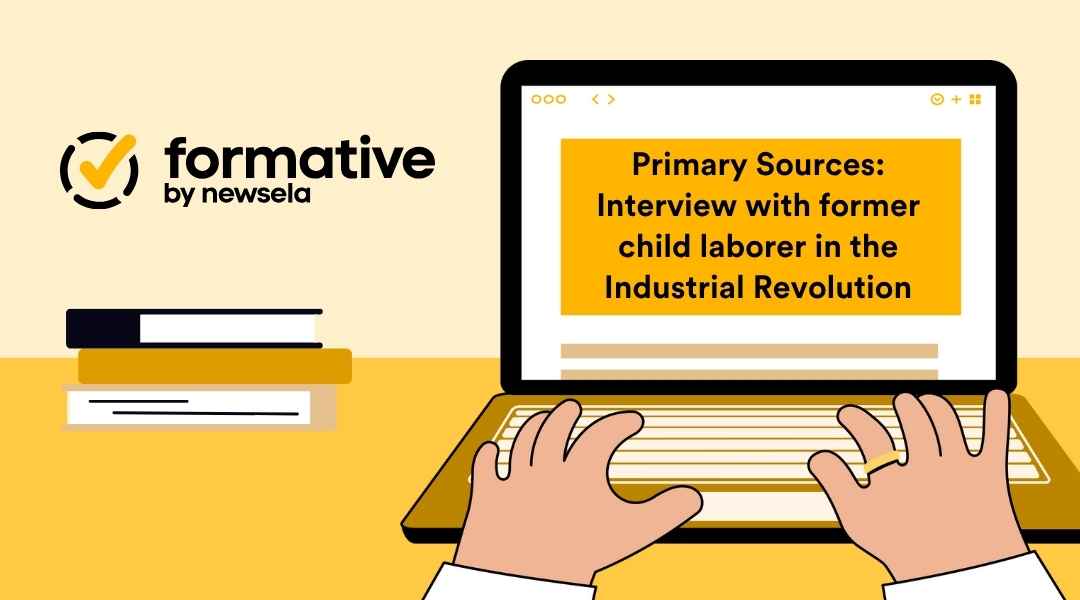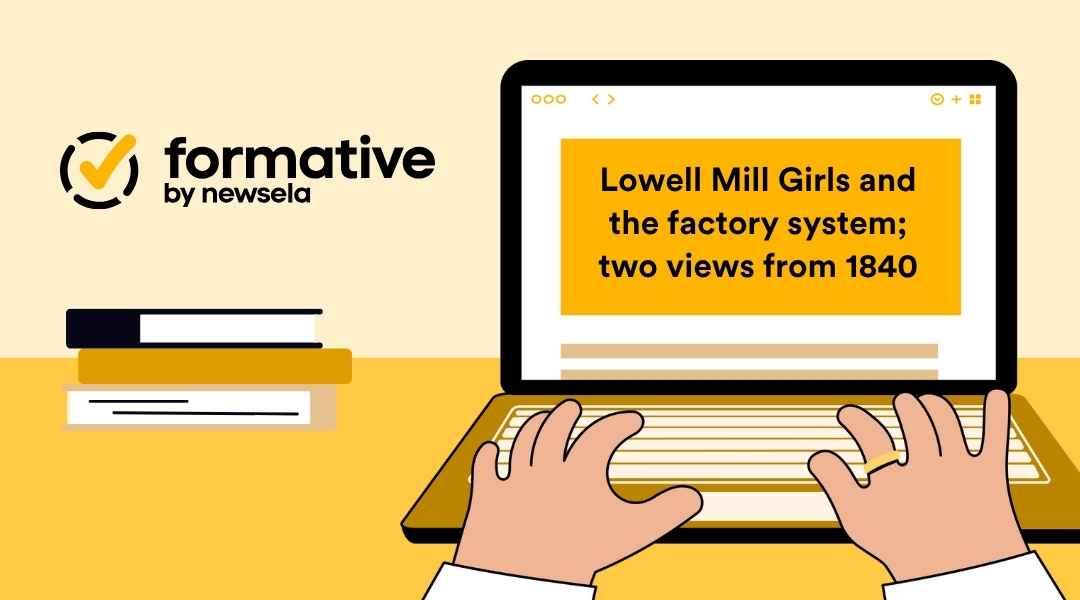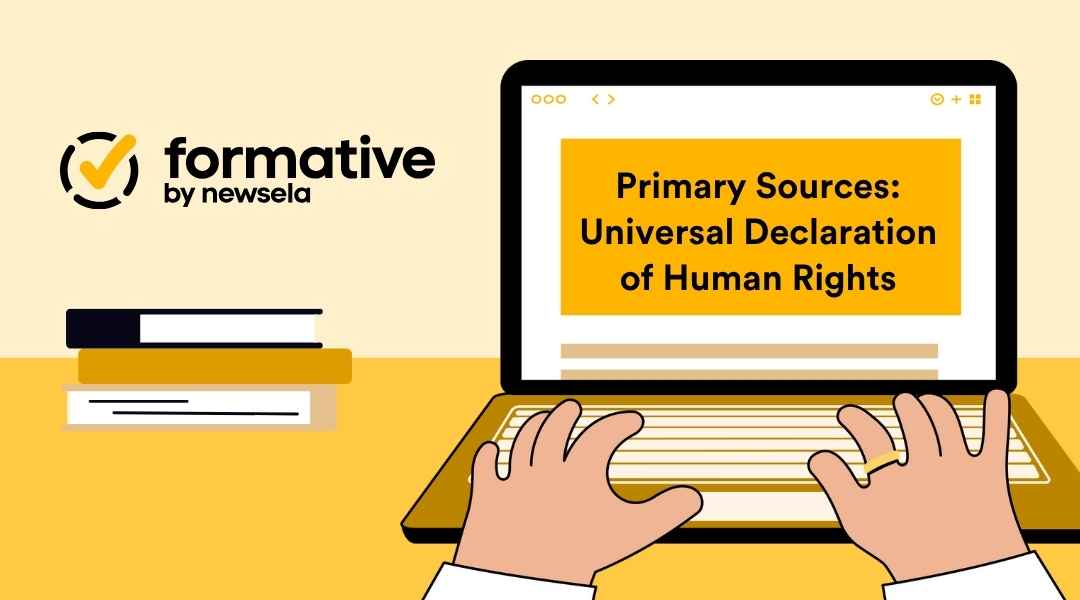Partial service disruption: AWS is experiencing an outage affecting Formative. We’re monitoring and will restore full functionality as soon as possible.


Depending on your school or district's schedule, Labor Day is either the first holiday of the school year or the last celebration before students return to class. Either way, you can use this holiday as a hook to kick off your beginning-of-the-year lessons and ease students back into their school routines.
Today, we’re sharing four primary-source activities for Labor Day that can help your students understand the holiday's importance and get back into the swing of schoolwork.
Each of these Labor Day lessons has an interactive activity from the shared Formative Library to engage students and make your lesson planning easier.
You can customize the activity templates by adjusting settings, editing existing questions, or adding content to create a more comprehensive assessment. With a Newsela Social Studies license, you can also explore interviews and documents that will help your students better understand the events that led up to creating the Labor Day holiday—and the changes that came after:

Before the Industrial Revolution, labor laws were significantly different from those in place today. In the early 19th century, English lawmaker and social reformer Michael Sadler proposed a new law to limit child labor for those under age 18 to 10 hours per day.
In 1832, Sadler interviewed Michael Crabtree, a former child laborer who spent most of his childhood working in factories, to learn about his experiences.
Students can read Sadler’s interview with Crabtree to learn more about what life was like for child laborers before labor laws existed. Then, as a class, you can discuss how their working conditions differ from the jobs teenagers may have today.

Lowell, Massachusetts, was home to some of the first large-scale textile mills in the United States and one of the first sites of the Industrial Revolution in America. For many women workers, the mills brought a sense of freedom, allowing them to earn their own money and expand their education.
Have students read articles that have two opposing viewpoints on the Lowell mills. Orestes Brownson’s “The Laboring Classes” critiques the wage system and argues that working in factories is not a suitable environment for women.
Then, have them read an anonymous response to Brownson’s article, “A Factory Girl,” which defended the mill girls and their decision to work.
%20Children%20working%20in%20the%20Pennsylvania%20coal%20mines.jpg)
In the 20th century, coal was one of Pennsylvania’s main industries. From the mines to the mills, many people were involved in collecting and transforming this natural resource to meet society’s needs. Unfortunately, with a product in such high demand, many coal mines had poor working conditions, especially for child laborers.
Have students read the article “Children of the Coal Shadow,” published in McClure’s Magazine in 1902. The article illustrates how children were tasked with separating impurities from coal by hand in processing plants. After reading, have students compare and contrast the experiences of coal workers with those of the Lowell mill girls and British factory workers.

In 1948, the United Nations General Assembly adopted the Universal Declaration of Human Rights in response to the atrocities committed during the Holocaust. It sets standards and enacts protections to ensure that people treat their fellow humans with dignity and respect.
This document has influenced subsequent legislation, including some of the labor rights legislation we have today. Have students read the full text of the Declaration, including its preamble and all 30 Articles.
Then, have them use the document to decide which, if any, of these rights employers violated for workers in the coal mines, mills, and factories of the 19th and 20th centuries.
The Formative Library has a variety of free, pre-made activities developed by our curriculum experts and educators like you. You can use these templates as-is or customize them to fit your instructional needs. Use the library’s sort filters to browse content by subject and grade level to find what you want.
Create your own activity if you don’t see a template that matches your instructional needs! Log in to your Formative account and choose how to customize your lesson or assessment. You can create new slides with various multimedia, including audio and video, import content from Google, or enhance a PDF or existing document.
Don’t have a Formative account yet? Sign up for Formative for free today to start creating activities for Labor Day and beyond!
